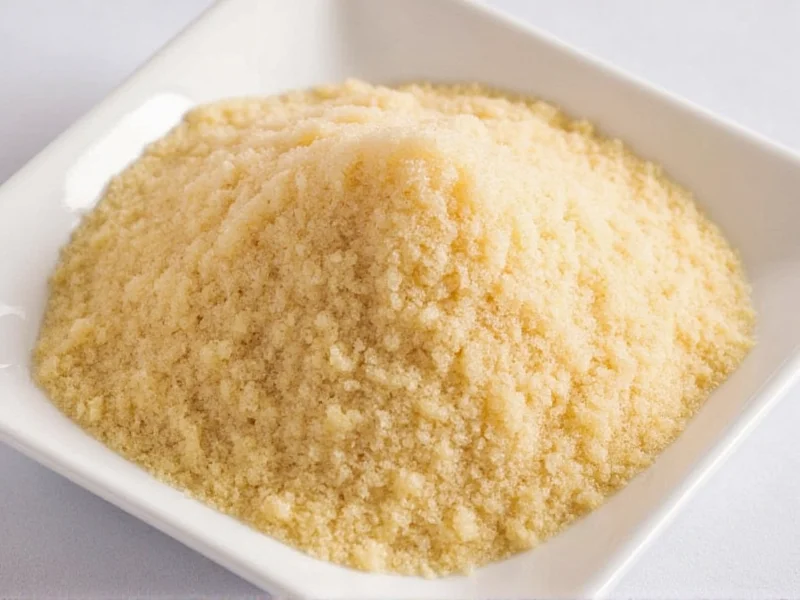Originating from Guyana (formerly British Guiana), where it was first commercially produced on plantations along the Demerara River, this specialty sugar has become a favorite among chefs and home bakers seeking more complex sweetness in their creations. The production process involves minimal refining, which preserves more of the natural sugarcane molasses compared to highly processed white sugars.
How Demerara Sugar Is Made
Manufacturers produce demerara sugar through a straightforward process that maintains its natural qualities. After extracting juice from sugar cane stalks, they boil the liquid to concentrate it, then centrifuge the mixture to separate crystals from the remaining liquid. Unlike white sugar production, demerara undergoes only one crystallization cycle with minimal washing, preserving its natural molasses content and distinctive golden hue.
Physical Characteristics and Flavor Profile
Demerara sugar stands out with its large, sparkling golden-brown crystals that catch the light beautifully. The crystals measure approximately 0.5-1mm in diameter, significantly larger than standard granulated sugar. Its moisture content sits around 2-3%, giving it a slightly sticky quality while maintaining excellent pourability.
| Sugar Type | Crystal Size | Molasses Content | Color |
|---|---|---|---|
| Demerara | Large (0.5-1mm) | 2-3% | Golden brown |
| Turbinado | Medium-large | 2-3% | Light brown |
| White Sugar | Small (0.3-0.5mm) | Negligible | White |
| Dark Brown Sugar | Medium | 5-10% | Dark brown |
Difference Between Demerara and Brown Sugar
Many home cooks confuse demerara sugar with regular brown sugar, but key differences exist. Commercial brown sugar typically consists of refined white sugar with molasses added back in, while demerara retains its natural molasses through minimal processing. Demerara features larger crystals and a more delicate molasses flavor compared to the finer texture and stronger molasses taste of dark brown sugar.
When considering demerara sugar vs turbinado, these two sugars share many similarities as both are minimally processed cane sugars with large crystals. The primary difference lies in their origin and slight variations in processing—demerara traditionally comes from Guyana while turbinado is a more generic term for centrifuged cane sugar.
Nutritional Profile and Health Considerations
Despite common misconceptions, is demerara sugar healthier than white sugar requires careful consideration. Nutritionally, demerara contains virtually identical calories and carbohydrates to white sugar (approximately 15 calories and 4 grams of sugar per teaspoon). The minor nutritional advantage comes from trace minerals like calcium, iron, and potassium present in the small amount of retained molasses.
Many people seeking what is demerara sugar used for in healthier baking should understand that while it offers marginally more nutrients, it still functions as a refined sugar in the body. The glycemic index remains similar to white sugar, so those monitoring blood sugar should treat it comparably to other sugars.
Culinary Applications and Substitutions
Chefs prize demerara sugar for applications where its distinctive texture and flavor can shine. The large crystals make it perfect for:
- Crumb toppings for pies and crisps
- Sprinkling on muffins and scones before baking
- Sweetening coffee or tea where crystals remain partially undissolved
- Creating caramel sauces with nuanced flavor
When substituting in recipes, use a 1:1 ratio for white sugar in most baking applications, though note that the larger crystals may not dissolve completely in cold beverages or delicate frostings. For demerara sugar substitute needs, turbinado sugar works as the closest alternative, while light brown sugar provides similar flavor with finer texture.
Storage Recommendations
Like other crystalline sugars, demerara requires proper storage to maintain its characteristic crunch. Keep it in an airtight container away from moisture, which can cause the crystals to clump. Unlike brown sugar, it rarely requires a terra cotta disc or bread slice to maintain moisture balance due to its lower hygroscopic nature. Properly stored, demerara sugar maintains quality for 18-24 months.
Where to Find Demerara Sugar
Locating demerara sugar has become easier as specialty sugars gain popularity. Most well-stocked supermarkets now carry it in the baking aisle alongside other specialty sugars. Health food stores typically stock organic varieties, while online retailers offer multiple brands and bulk purchasing options for those who use it regularly in baking. When shopping, look for products labeled specifically as "demerara" rather than generic "raw cane sugar" for authentic characteristics.











 浙公网安备
33010002000092号
浙公网安备
33010002000092号 浙B2-20120091-4
浙B2-20120091-4